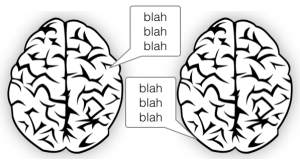I originally coined the term ‘physiological computing’ to describe a whole class of emerging technologies constructed around closed-loop control. These technologies collected implicit measures from the brain and body of the user, which informed a process of intelligent adaptation at the user interface.
If you survey research in this field, from mental workload monitoring to applications in affective computing, there’s an overwhelming bias towards the first part of the closed-loop – the business of designing sensors, collecting data and classifying psychological states. In contrast, you see very little on what happens at the interface once target states have been detected. The dearth of work on intelligent adaptation is a problem because signal processing protocols and machine learning algorithms are being developed in a vacuum – without any context for usage. This disconnect both neglects and negates the holistic nature of closed-loop control and the direct link between classification and adaptation. We can even generate a maxim to describe the relationship between the two:
the number of states recognised by a physiological computing system should be minimum required to support the range of adaptive options that can be delivered at the interface
This maxim minimises the number of states to enhance classification accuracy, while making an explicit link between the act of measurement at the first part of the loop with the process of adaptation that is the last link in the chain.
If this kind of stuff sounds abstract or of limited relevance to the research community, it shouldn’t. If we look at research into the classic ‘active’ BCI paradigm, there is clear continuity between state classification and corresponding actions at the interface. This continuity owes its prominence to the fact that the BCI research community is dedicated to enhancing the lives of end users and the utility of the system lies at the core of their research process. But to be fair, the link between brain activation and input control is direct and easy to conceptualise in the ‘active’ BCI paradigm. For those systems that working on an implicit basis, detection of the target state is merely the jumping off point for a complicated process of user interface design.


